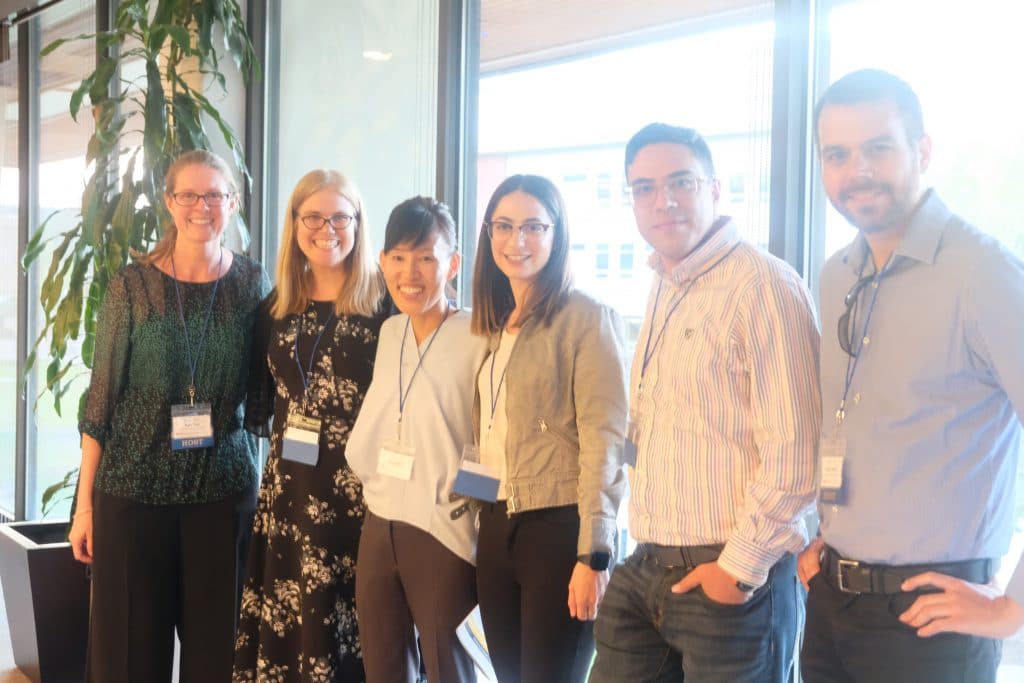Sept. 24, 2019
After more than two years of planning, the English Department at Northern Arizona University hosted the 11th annual Pronunciation in Second Language Learning and Teaching (PSLLT) Conference on Sept. 12-14. The conference focused on interdisciplinary intersections in second language (L2) pronunciation learning and teaching. PSLLT 2019 welcomed more than 260 people from 26 different countries.
Okim Kang, professor of TESL/applied linguistics and conference organizer, said in the past, most attendees were from North America or European countries. This was the first year every continent was represented. She recalled one woman telling her it took more than 37 hours to arrive in Flagstaff.
“The conference was not just for second language speech learning and teaching,” Kang said. “We intentionally invited people from various interdisciplinary sections, and its scope was much broader this time than ever before.”
In 2018, she and her organizing team applied and were granted the Language Learning Roundtable Grant, which provided a basis for funding. Others supporting funds came from NAU sponsors: the Office of the President; the Office of Vice President for Research; the Center for International Education; the Department of Global Languages and Cultures; and the Global Engagement and Language Learning Center along with many publishers and language learning companies.
Attendees included professors, researchers, teachers, students and industry representatives. Expert and novice researchers in their disciplines came together to share knowledge in the form of presentations, posters, workshops and roundtable group discussions.
In particular, the roundtable invited speakers supported by the Language Learning grant and emphasized the importance of using interdisciplinary fields to attack L2 learning from different angles. Corpus linguistics, pragmatics, instructed second language acquisition, interpersonal communication and assessment were all topics of interest as participants discussed ways to inform and shape language learning and teaching.
The conference launched with two pre-workshops offered by internationally renowned scholars Tracey Derwing, Murray Munro and Eric Friginal. Douglas Biber, Regent’s professor in the NAU English Department, introduced the benefits of using corpus analysis in his keynote speech titled “Corpus analysis of spoken discourse: Research findings, prospects, implications for teaching.”
Interaction among disciplines serves a twofold purpose. Applied linguists within pronunciation work gains useful knowledge of new literature in each interdisciplinary field, while researchers in the different fields become aware of problems the field of pronunciation teaching and learning faces. Once each stance is recognized, researchers can develop projects that explore the details of L2 pronunciation and language acquisition in general.
This year PSLLT 2019 not only opened up a dialogue among different language disciplines, but a conversation with applied linguists and researchers all over the world.
“A one discipline-based conference can often get small, but I wanted to make this year really diverse,” Kang said. “My field wasn’t one of the huge disciplines, but it has been growing rapidly in the last two decades. I feel it is my responsibility to make it more comprehensible in the larger field.”
Kang credited the success of the conference to her organizing committee: Shelley Staples, Alyssa Kermad, Kevin Hirshi, Kate Yaw and Mohammadreza Dalman; the English department faculty and staff, Kelly Mercer; her sponsors and all of the attendees. She added her special thanks to more than 45 volunteers—mostly graduate students in the TESL/Applied Linguistics programs at NAU—for their involvement.

In an effort to raise more international awareness of pronunciation language learning and teaching, she advertised the conference through NAU connections, international listservs, social networking sites and personal connections. Kang chuckled as she mentioned it helped to have the Grand Canyon nearby as a selling point. Many attendees spent an extra day to explore this wonder of the world after attending the sessions.
The conference also incorporated the Flagstaff community. Attendees spent an evening at Charly’s Pub & Grill in the historic Weatherford Hotel, which gave them a chance to experience the quaint downtown atmosphere. Graduate students volunteered their time to give guided tours pointing out the icons still remaining along Route 66.


